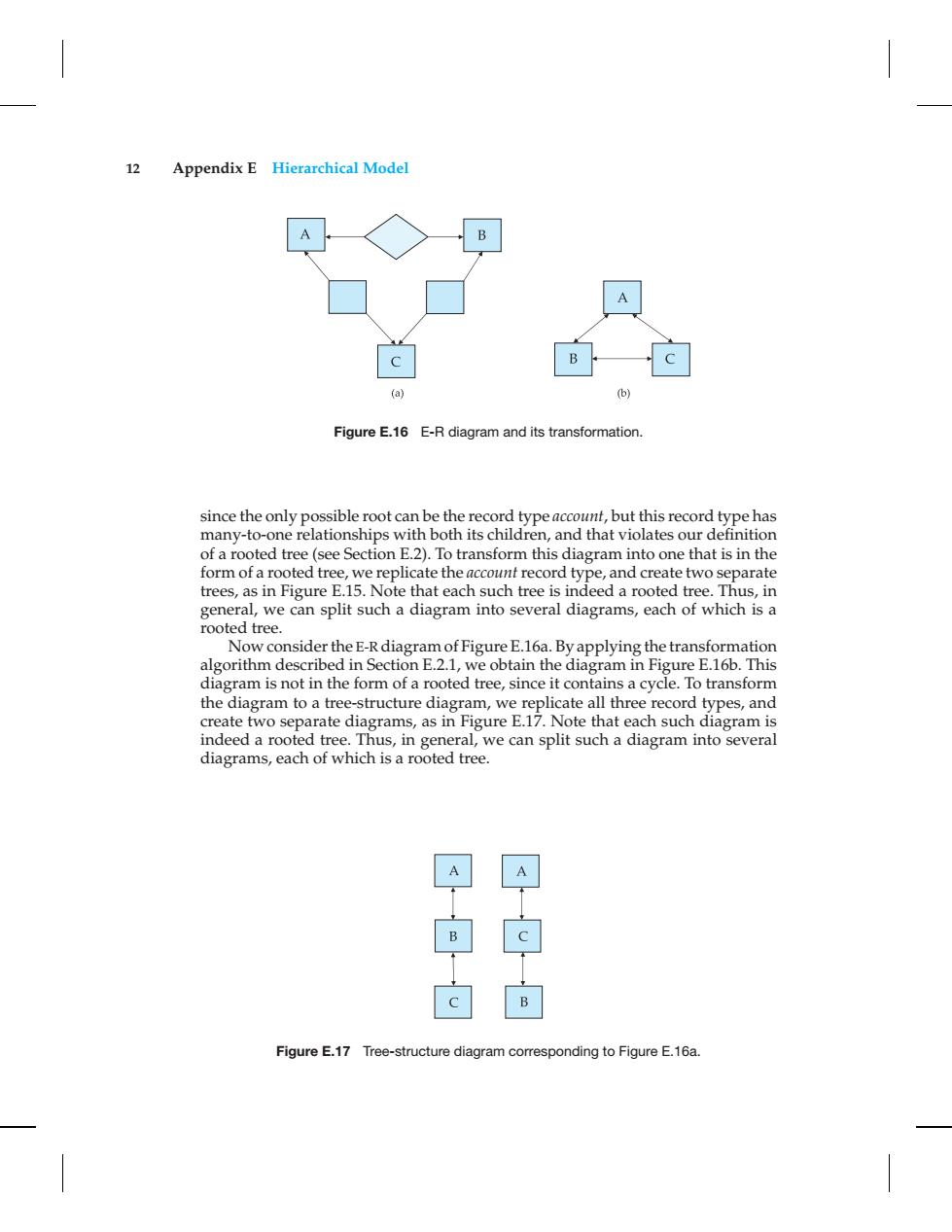正在加载图片...

12 Appendix E Hierarchical Model B A (a) (b) Figure E.16 E-R diagram and its transformation. since the only possible root can be the record type account,but this record type has many-to-one relationships with both its children,and that violates our definition of a rooted tree(see Section E.2).To transform this diagram into one that is in the form of a rooted tree,we replicate the account record type,and create two separate trees,as in Figure E.15.Note that each such tree is indeed a rooted tree.Thus,in general,we can split such a diagram into several diagrams,each of which is a rooted tree. Now consider the E-R diagram of Figure E.16a.By applying the transformation algorithm described in Section E.2.1,we obtain the diagram in Figure E.16b.This diagram is not in the form of a rooted tree,since it contains a cycle.To transform the diagram to a tree-structure diagram,we replicate all three record types,and create two separate diagrams,as in Figure E.17.Note that each such diagram is indeed a rooted tree.Thus,in general,we can split such a diagram into several diagrams,each of which is a rooted tree. Figure E.17 Tree-structure diagram corresponding to Figure E.16a12 Appendix E Hierarchical Model Figure E.16 E-R diagram and its transformation. since the only possible root can be the record type account, but this record type has many-to-one relationships with both its children, and that violates our definition of a rooted tree (see Section E.2). To transform this diagram into one that is in the form of a rooted tree, we replicate the accountrecord type, and create two separate trees, as in Figure E.15. Note that each such tree is indeed a rooted tree. Thus, in general, we can split such a diagram into several diagrams, each of which is a rooted tree. Now consider the E-R diagram of Figure E.16a. By applying the transformation algorithm described in Section E.2.1, we obtain the diagram in Figure E.16b. This diagram is not in the form of a rooted tree, since it contains a cycle. To transform the diagram to a tree-structure diagram, we replicate all three record types, and create two separate diagrams, as in Figure E.17. Note that each such diagram is indeed a rooted tree. Thus, in general, we can split such a diagram into several diagrams, each of which is a rooted tree. Figure E.17 Tree-structure diagram corresponding to Figure E.16a